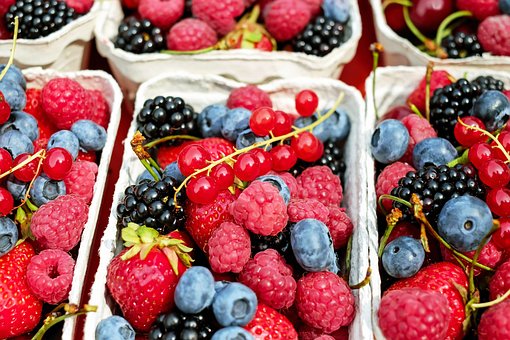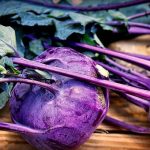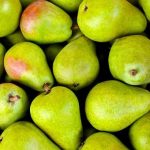More and more, it seems like “superfoods” are making headlines every week. One week it’s kale, the next week it’s avocado. The term “superfood” has become a popular buzzword. Thanks to clever marketing, it’s being slapped on just about anything. (Butter? Really?)
Many people are wondering what superfoods are, with all the confusion and misinformation. Is there a superfood equivalent to Harvard’s admissions process? Is there a society of superfoods that selects new members? And is there any truth to these superfood claims?
If you want to know the answers to the questions posed in the introduction, read on.
What is a superfood?
According to a quick Google search, a superfood is “a nutrient-rich food considered to be especially beneficial for health and well-being.”
To put it simply, superfoods are nutritional powerhouses. Superfoods are packed full of nutrients like vitamins, minerals, antioxidants, enzymes and healthy fats. Each of these nutrients is vital for your body to function properly.
Superfoods are consider the superheroes of the plant world. Superfoods are foods that have a lot of nutrients in them which help make your body stronger and healthier so that it can better fight off diseases.
Superfoods are not as out of reach as they may sound. They don’t have a logo or cape like Superman, but they are still relatively easy to find. You’ve likely seen some of these health foods at your local store.
The vast majority of superfoods are found in nature, growing from the soil. This includes fruits, vegetables, seeds, grasses, seaweed, and leaves.
Top Superfoods
It has been proven through multiple scientific studies that some foods offer more health benefits than others. These are some foods that are considered to be “superfoods” because of the positive effects they have on health, based on scientific evidence.
1. Açaí
Açaí berries are native to Central and South America. They grow in parts of the Amazon rainforest in Brazil.
The fruit known as the Brazilian beauty berry has high levels of antioxidants, which can help reduce the appearance of aging and keep skin looking healthy.
2. Acerola Cherry
An Acerola cherry is actually not a type of cherry. The berries on the plant look like cherries and contain high levels of vitamin C, even more than oranges. Acerola contains high levels of vitamin A and antioxidants.
3. Alfalfa
Alfalfa is a foraging crop. Alfalfa Sprouts, while mostly grown to be fed to animals, (especially in the form of hay) are actually quite nutritious.
Alfalfa is not only rich in vitamins and minerals, but it has also been shown to lower cholesterol levels, reduce inflammation, and oxidative damage caused by free radicals.
4. Banana
Bananas are a superfood that is easy and accessible to add to your diet because they are one of the world’s most popular fruits.
Although most people know that bananas are a great source of potassium, which is beneficial for heart health, not everyone is aware of the other health benefits that this fruit has to offer. Bananas contain fiber that helps with digestion and prevents blood sugar levels from increasing too much.
5. Baobab
The Baobab fruit is native to Africa and has been used for centuries to treat many different ailments. The fruit is rich in antioxidants and polyphenols, which are thought to be responsible for its health benefits.
Baobab can boost the immune system and increase iron absorption due to its high vitamin C content. Baobab is rich in fiber which can slow down the rise in blood sugar spikes. Research has also demonstrated that the African superfruit can help to regulate blood sugar levels and improve digestion.
READ MORE: 7 Foods Rich In Polyphenols And Their Benefits
6. Barley Grass
Barley is a healthy food that contains many nutrients such as fiber, iron and calcium. Barley grass has been shown to improve immunity and kill cancer cells in studies. Barley grass can be used as a supplement to boost weight loss, enhance immune function, is a powerful antioxidant and improves gut health. It has been used to treat Ulcerative Colitis.
Barley has been served as a food staple throughout history and amazingly is one of the only resources on earth that can provide the human body with the nutrients it needs from birth through old age.
7. Blueberries
Blueberries are proof that superfoods come in small packages. Although they may be small, these berries are packed with nutrients that can help fight diseases, like antioxidants and phytochemicals. They’re also high in vitamins K, C, and E.
8. Cacao
Cacao is cocoa’s healthier cousin. Raw cacao contains 300 different chemical compounds, 4 times the amount of regular processed dark chocolate, and 20 times more than blueberries.
Cacao Mint Spirulina is one of the most nutrient-dense foods in nature. It is a rich source of chlorophyll, amino acids, antioxidants, vitamins, minerals and trace elements. Spirulina is nature’s richest food source of Vitamin B-13, Vitamin E, Beta-Carotene, Gamma Linolenic Acid and chlorophyll. Platinum Cacao Mint Spirulina can help your immune system, increase endurance, reduce cravings, support cell division, support liver function and maintain a healthy blood pressure.
READ MORE: Dark Chocolate Health Benefits
9. Carob
Carob contains antioxidants which have been linked to cancer prevention. Carob antioxidants include gallic acid and flavonoids. Carob is also high in fiber, calcium, and potassium. Carob does not contain oxalates, so the body is able to absorb the calcium.
10. Chia Seeds
Ch-ch-chia became a household name in the 80’s thanks to those As Seen On TV grass planters. Chia seeds have been around for a long time—as far back as 3500 BC. They were a staple in the diet of the Aztecs.
They are also an excellent source of fiber, nutrients, and antioxidants. The Mayan word for “chia” means strength, which is appropriate considering that chia seeds are an excellent source of protein. They are also an excellent source of fiber, nutrients, and antioxidants. They contain high levels of omega-3 fatty acids, fiber, and antioxidants.
Purium’s Power Shake is an excellent source of chia!
11. Chlorella
Chlorella is a microalgae that is very powerful and contains more chlorophyll than any other plant. Chlorella has been shown to protect the body against radiation treatments, making it a valuable tool for those undergoing radiation therapy. Chlorella also has the ability to remove heavy metals from the body and prevent them from being absorbed.
12. Garlic
Garlic has many nutrients that make it a superfood. It not only tastes great, but also has health benefits. This text lists some nutrients that could promote immunity and other health benefits. Garlic contains vitamin C, manganese, selenium, fibre, and vitamin B6.
13. Green Tea
Green tea is rich in antioxidants and contains caffeine. It is regularly consumed because it is considered a superfood. This beverage is rich in an antioxidant called catechin epigallocatechin gallate (EGCG) which is good for you.
Green tea’s reported health benefits, like protecting the heart, are thought to come from its rich mix of EGCG and other polyphenols and phenolic acids.
READ MORE: Caffeine Health Benefits
14. Kefir
Kefir is a drink made by fermenting milk. It is a rich source of protein, B vitamins, calcium, potassium, and probiotics.
Kefir is similar to yoghurt, but usually has more probiotics and is thinner, so people drink it. Kefir’s status as a superfood is largely due to the probiotic strains it contains, which have been shown to help reduce cholesterol, lower blood pressure and improve digestion.
You can find kefir in food shops, or make it yourself if you want to avoid added sugar.
15. Kale
While all dark green, leafy vegetables are technically superfoods, many believe that kale is the best of them all because it contains high levels of vitamin C, vitamin A, and vitamin K. These vitamins are essential for normal bone function and blood clotting.
Kale contains vitamin B6, which is important for both nervous system and immune system health. Plus minerals iron, manganese, calcium, copper, potassium and magnesium. This food is also rich in lutein and zeaxanthin, which are nutrients crucial for eye health.
A study found that people with low levels of these nutrients in their eyes were at increased risk of developing age-related macular degeneration or cataracts.
16. Legumes
The food group known as legumes includes beans, peas, lentils, alfalfa, and chickpeas, as well as peanuts (which are often thought of as a nut, but are actually not true nuts).
Legumes are an excellent source of B vitamins, minerals, fiber, and protein. Studies have found that legumes may help to lower cholesterol and blood pressure, as well as promote healthy weight maintenance, due to their high fiber content.
17. Nuts
Nuts provide vegan fats and protein, as well as healthy fiber, vitamins and minerals. Antioxidants are important, and nuts that taste divine contain them. The anti-inflammatory compounds help to protect the body by reducing oxidative stress.
Eating nuts has been linked with good heart health due to their healthy fats, fiber, and vitamin content.
18. Olive Oil
There are many benefits to following a Mediterranean diet, including improved heart health and weight loss. An important ingredient in this dish is olive oil, which is a natural oil made from the fruit of olive trees. It has a high concentration of monounsaturated fats (MUFAs) and polyphenolic compounds.
Extra virgin olive oil is a healthy fat that contains polyphenols. You will not get the same benefits from refined olive oils, so make sure to buy some good quality olive oil.
19. Quinoa
This wholegrain isn’t just a great source of fiber. Quinoa is a nutrient-rich grain that contains a balance of essential amino acids, magnesium, B-vitamins, iron, potassium, calcium, phosphorus, copper, manganese, zinc, and vitamin E. These nutrients work together to protect cells from oxidative stress. Quinoa also contains antioxidants, including quercetin. These have been shown to have anti-inflammatory and anti-microbial effects.
A 2004 study found that people who ate quinoa instead of gluten-free breads and pastas had lower blood sugar, insulin, and blood fat levels.
20. Seaweed
Seaweed is a nutrient-dense food that is popular in Asian cuisine and is becoming increasingly popular all over the world. A single serving of seaweed can provide you with nutrients like folic acid, vitamin K, fiber, and iodine. The composition of sea vegetables is different from land vegetables, and they may contain different antioxidants that can help to reduce oxidative damage to cells.
Sea vegetables offer the broadest range of minerals of any food, containing virtually all the minerals found in the ocean- the same minerals that are in human blood. Super Meal LOV contains organic sea kelp which is known to contain over 96 different minerals. The iodine in green kelp is helpful for people with thyroid problems.
21. Seeds
Seeds are similar to nuts in that they are often considered a superfood because of their high nutrient content, including vitamins, minerals, antioxidants, healthy fats, fiber and protein. Some of the most popular seeds include:
- Sunflower seeds
- Chia seeds
- Pumpkin seeds
- Hemp seeds
- Flaxseeds
Seeds are a good source of healthy fats, which can help support good heart health.
22. Spirulina
This algae species is commonly known for its bright blue-green color. It is an ancient plant that has lived on Earth for over 2.4 billion years. Spirulina is considered a superfood because it contains a lot of nutrients, including vitamin B12, vitamin A, vitamin B1, vitamin B2, iodine, and iron.
The nutrients in spirulina can help support different areas of health such as the heart and immune system. Additionally, the antioxidants present in spirulina can help to protect the body against oxidative stress.
Spirulina is rich in nutrients that are essential for bones, such as protein, calcium, potassium, and phosphorus. It is also a good source of iron and magnesium, which are necessary for energy release and electrolyte balance.
A 2014 study found that taking 1 gram of spirulina per day lowered cholesterol levels by 9 percent in people with raised levels of blood fats.
Organic Spirulina can now be taken in capsule form. Organic Spirulina Capsules contain over 100 synergistic nutrients! Packed with vegetarian protein, marine omega fatty acids, chlorophyll, essential amino acids, antioxidants, and vitamins, Spirulina is nature’s ultimate wholefood multi-vitamin.
READ MORE: Spirulina Health Benefits
23. Turmeric
Turmeric contains bioactive plant compounds called curcuminoids, which have strong anti-inflammatory and antioxidant properties.
The 2017 Central Michigan University found that curcuminoids can help reduce blood pressure, lower cholesterol levels, as well as having an anti-anxiety effect.
Food Nutrition
Most Americans don’t consume enough fruits and vegetables. While you may think that conventionally grown produce is nutritionally dense, it is not as dense as it used to be. Here’s 3 reasons why:
1. Long Supply Chains
Do you know the origin of the food you eat and what it takes to get it to you? The Harvard Medical School Center for Health and the Global Environment has stated that food which has been transported over long distances is unlikely to be as nutritious.
Foods are usually harvested early and ripened in storage with the help of chemical gases, such as ethylene gas. Food will also continue to ripen during transport.
2. Monocrops
The term is used in agriculture. A monocrop is a crop that is planted in the same place year after year. It does this by causing the nutrients to leach out of the soil. Monocrops require more synthetic herbicides and pesticides than other crops.
The harmful residues from pesticides not only remain on the crops, but they also leach into the soil and pollute groundwater supplies.
3. Soil Depletion
Several studies that have been published in scientific journals show that soil depletion is causing the nutrient density of fruit and vegetables to decrease.
The researchers found 43 different vegetables and fruits, and found that the amount of protein, calcium, phosphorus, iron, riboflavin (vitamin B2), and vitamin C have decreased significantly over the past 50 years.
Although we have been able to breed crops that grow bigger and more rapidly, their ability to manufacture or uptake nutrients has not improved at the same rate.
Takeaway
When you eat superfoods, you’re getting more nutrition for your money because they have a higher concentration of nutrients.
- Superfoods are foods or drinks that are considered highly nutritious and good for health – although there is no set legal definition
- They tend to contain lots of vitamins, minerals, antioxidants, fibre and healthy fats
- You can enjoy an array of different superfoods, from plant-based ones like vegetables and herbs and spices to seafood and some dairy products
- Superfood powders can be useful for throwing into a blender with fruits and vegetables and increasing your nutrient intake
- Try and include more into your diet and see if they make a difference in your health and life!









